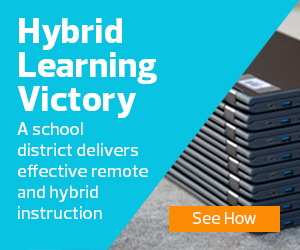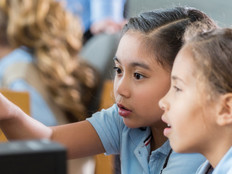Hybrid Hangup Challenge #1: Classroom Management
WHO: Allison Haley, high school language arts teacher
LOCATION: Noblesville Schools, Indiana
ENROLLMENT: 10,000 students
The Model:
The high school has a hybrid-synchronous schedule for the majority of students. Half of the students attend school in person on Mondays and Tuesdays, while the other half are at home learning virtually. This flips for Thursdays and Fridays. Wednesdays, all students stay home and do remote learning without direct instruction. There is also a group of students learning virtually 100 percent of the time. On remote learning days, teachers provide additional support (virtually) for students who need it, engage in professional development, participate in professional learning community (PLC) meetings, and plan lessons.
Why Classroom Management?
One of Haley’s greatest challenges in a hybrid learning environment is classroom management. “Nothing is routine or predictable,” she says. “Students are in and out [of the classroom] because of quarantines, [and] technology can have hiccups.” Managing students at home on Zoom is also tricky, especially if a camera is off or a student is not engaged or responding. “I have to always be conscious about what other things might be going on at home for students other than school,” Haley says.
Solutions:
Haley believes routines are vital to good classroom management, which is why she builds as much routine into her lessons as possible. For example, she starts class with a warmup activity for everyone. “This gives me time to take attendance and get the kids logged on to Zoom,” she says. Haley also leverages a variety of virtual resources, such as Nearpod and Pear Deck, but she cautions teachers not to introduce too many. “I found when I started using too many different platforms, it was overwhelming for the kids and they were logging off Zoom or not turning in work.” Haley recommends teachers find a few that work and stick to those.
Final Thoughts:
Haley’s advice to teachers is simple: “Do not do the most. Slow down when you need to, listen to the kids, be real with the kids, and do the best you can to get to know your kids. That's what they need right now.”
DIVE DEEPER: What does it take to get hybrid instruction right?














